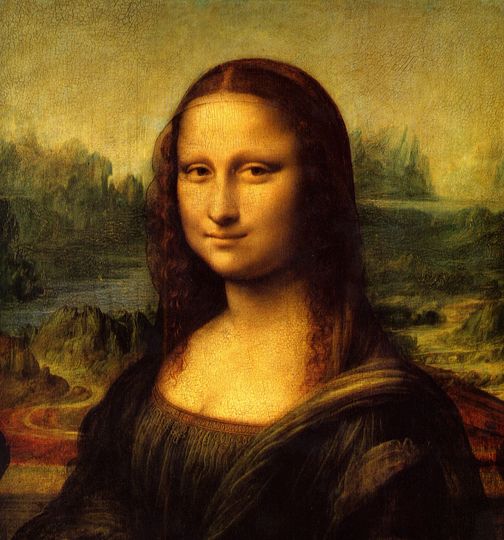图像算法---Image Deformation Using Moving Least Squares
原文地址:http://vision.gel.ulaval.ca/~jflalonde/cours/4105/h14/tps/results/project/jingweicao/index.html
Final Project: Image Deformation Using Moving Least Squares
Jingwei Cao
Project Description
In this project, I implemented the paper "Image deformation using moving least square" which is proposed by Scott Schaefer. This method consists of three type of deformation:affine deformation,similarity deformation and rigid deformation. And it also use both controlling point sets and controlling line segment sets to specify the morph.
Part1: Moving Least Squares Deformation
The MLS (Moving Least Squares) Deformation is used to find the best transformation function f that maps p to q . p is a set of controlled handles and q is the deformed positions of the controlled handles. The function f(v) needs to satisfy three conditions:(1) Interpolation: The handles p should map directly to q under deformation (i.e. f(pi)=qi )(2) Smoothness: f should produce smooth deformations (3)Identity: If the deformed handles q are the same as the p , then f should be the identity function.(i.e., qi=pi ⇒f(v)=v )
1 Affine Deformation
Affine transform: lv(x)=xM+T
Translation can be removed: T=q∗−p∗M
p∗=ΣiwipiΣiwi q∗=ΣiwiqiΣiwi
We can easily get: Iv(x)=(x−p∗)M+q∗
The new cost function:
Σiwi|p^iM−q^i|2 where p^i=pi−p∗ q^i=qi−q∗
M could be different class of transformations
Solution: M=(Σip^Tiwip^i)−1Σjwjp^Tjq^j
The deformation function:
fa(v)=ΣjAjq^j+q∗
Aj=(v−p∗)(Σip^Tiwip^i)−1p^Ti
Aj can be precomputed
Contains non-uniform scaling and shear
2 Similarity Deformation
A special subset of affine transformations
Translation,Rotation,Constraints: Uniform-Scaling
Requirements: MTM=λ2I
Define M=(M1,M2) , where M2=M⊥1
Cost function (Least squares problem) still quadratic in M
Σiwi|(p^i−p^⊥i)M−q^Ti|2 , where (x,y)⊥=(−y,x)
Solution for matrix M
M=1μsΣiwi(p^i−p^⊥i)(q^Ti,−qi^⊥T) , where μs=Σiwip^ip^Ti
Solution for deformation function
fs(v)=Σiq^i(1μsAi)+q∗ ,where Ai=wi(p^i−p^⊥i)(v−p∗−(v−p∗)⊥)T
3 Rigid Deformation
Solution for Matrix M
M=Σi(p^i−p^⊥i)(q^Ti,−qi^⊥T)(Σiwiq^ip^Ti)2+(Σiwiq^ip^⊥Ti)2√
Solution for deformation function
fr(v)=|v−p∗|f→r(v)|f→r(v)|+q∗ , where f→r(v)=Σiq^iAi and Ai is the same as in similarity deformations.
4 Experimental Results
I do the similar experiment but with the opposite direction. The puppet leans towards right.
The author's results
My own results
| Original Image | Affine Deformation | Similarity Deformation | Rigid Deformation |
 |
 |
 |
Some interesting result
| Monalisa | Deformed Monalisa |
 |
| Girrafe | Deformed Girrafe |
Generally speaking, the MLS image deformation using controlled points produces the result as I have expected. The rigid deformation can produce the most realistic result compared with other methods in my implementation but with the lowest speed.
Part2: Deformation with Line Segments
Handles are control curves instead of control points
Cost function
Σi∫10wi(t)|pi(t)M+T−qi(t)|2 and wi(t)=|p′i(t)||pi(t)−v|2α
T still can be removed
T=q∗−p∗M
T=q∗−p∗M
Σi∫10wi(t)|p^i(t)M−q^i(t)|2
where p^i(t)=pi(t)−p∗ and q^i(t)=qi(t)−q∗
1 Affine Lines
Represent line segments p^i(t) , q^i(t) as matrix products
p^i(t)=(1−t,t)(a^ib^i) and q^i(t)=(1−t,t)(c^id^i)
Cost function
Σi∫10|(1−t,t)((a^ib^i)M−(c^id^i))|2
Minimizer
M=(Σi(a^ib^i)TWi(a^ib^i))−1Σj(a^ib^i)TWj(c^id^i)
Wi=(δ00iδ01iδ01iδ11i) where δ00i=∫10wi(t)(1−t)2dt
δ01i=∫10wi(t)(1−t)tdt and δ11i=∫10wi(t)t2dt
Deformation
fa(v)=ΣjAj(c^id^i)+q∗
Aj=(v−p∗)(Σi(a^ib^i)TWi(a^ib^i))−1(a^jb^j)TWj
2 Similarity Lines
Cost function
Σi∫10|(1−t001−tt00t)⎛⎝⎜⎜⎜⎜⎜a^i−a^⊥ib^i−b^⊥i⎞⎠⎟⎟⎟⎟⎟M−(c^Tid^Ti)|2
Minimizer
M=1μsΣj⎛⎝⎜⎜⎜⎜⎜a^i−a^⊥ib^i−b^⊥i⎞⎠⎟⎟⎟⎟⎟TWj(c^Tjd^Tjc^⊥Tjd^⊥Tj)
where μs=Σia^ia^Tiδ00i+2a^